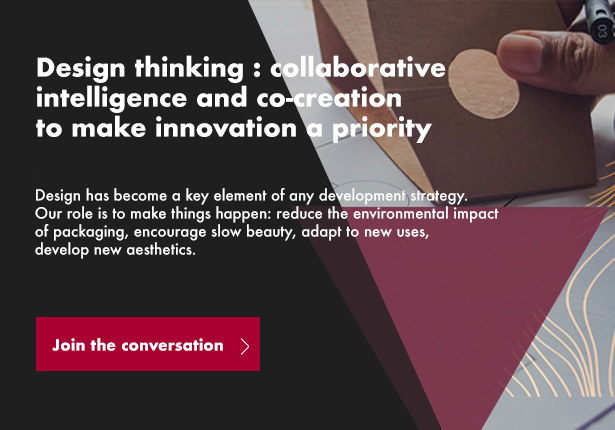
What makes a product desirable?
Elie Papiernik: A desirable object is an object that has meaning and style. Its desirability is born of its intrinsic value, its reality as an object: its shape, material, color. But beyond all that, the object is also an ambassador for its brand and must embody some kind of meaning in society. The brand must have a story to tell through its products, so that consumers can appropriate this story for themselves. Brand values should also generate desire for the product when they’re aligned with customer beliefs.
What constitutes a beautiful object in the lipstick market? What can we convey through lipstick packaging?
Elie Papiernik: As an example, I’d take our client Kiko, an Italian makeup brand that works with the country’s best suppliers to make very affordable products. They have a highly usual point-of-sale concept: Like some DNVBs (Digital Native Vertical Brands), Kiko has its own stores and operates with no middlemen. Despite this innovative business model, their packaging was fairly standard, and that was what we had to work on: creating a brand platform, coming up with a style, thinking about product desirability.
So we chose to highlight the brand’s “Italian-ness”, something perceived as being synonymous with quality, and focused on the shape, with an impeccable design that rivals the finest luxury brands. We also examined the physical and manual dimensions – how could we intelligently revisit these by creating lipstick cases that open differently? A brand’s identity is more than just visual – it must impact the five senses! There must be sincerity in the design of a beautiful object, and Kiko expresses this through its superb transparency about its products’ origins.
How do you think social networks impact the shapes and objects that cosmetic brands sell?
Elie Papiernik: Social networks have added a new element to a product’s desirability: It must now be “Instagramable.” That’s become truly essential for clients. You also have to explore the product’s storytelling on social networks and what consumers will be able to say about it. Youtube influencer reviews on cosmetic products are very popular: They rate the quality, test how it’s used or applied, and evaluate the texture or feel. So social networks are now essential and an integral part of any brand’s development strategy. Nevertheless, the design must be given tremendous importance – you cannot disappoint a customer when they receive the product, as that can have catastrophic results.
Do different countries and populations react differently to design and brand image? In China, for example, which accounts for more than half your business?
Elie Papiernik: The Chinese love our French brands, even though they want to develop their own products based on a strong cultural model. Chinese customers are now enjoying ever-increasing purchasing power. But they’re extremely demanding when it comes to product quality, are very attuned to brand storytelling, and extremely savvy. So Chinese customers now favor honest and authentic brands and aren’t fooled by marketing ploys that might be a bit cheap or opportunistic.
And in Europe?
Elie Papiernik: On the European continent, these kinds of preferences vary from country to country. To put it simply, the Germans have a functionalist side, greater concern about price. The English also have this rational side that you don’t see so much in southern Europe. The French, Italians, and Spanish are more attuned to brands’ stories, to their emotional, multi-sensory side. In South America, things are even more different in Brazil.There, they care a great deal about the challenges of sustainable development. They’re very involved consumers and they love French brands. This love of beautiful brands is also seen in Middle Eastern countries, where the customers are connoisseurs.
What do you see as the future of design and your profession?
Elie Papiernik: Design’s role within companies has changed a lot. Designers have gradually gained importance and become part of the management committee. In 2020, design has become a key element of any development strategy. Now, as creative forces, our role is to make things happen: reduce the environmental impact of packaging, encourage slow beauty, adapt to new uses, develop new aesthetics. Today, methods like design thinking means we can rely on collaborative intelligence and co-creation to make innovation a priority in our projects. Projects that are visionary by necessity, projects that build “brand intelligence” and encourage new societal models entailing greater respect for consumers and the planet.
A former student of the École Nationale Supérieur de Création Industrielle (National School for Industrial Creation), Elie Papiernik is Artistic Director at centdegrés, the independent creative agency he co-founded in Paris with David Nitlich in 1988. The firm has around 100 employees and operates in 11 countries. Working for clients like LVMH, Givenchy, and Coty Beauty, it generates an annual sales turnover of 12 million euros.







